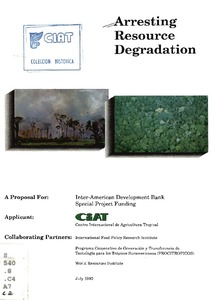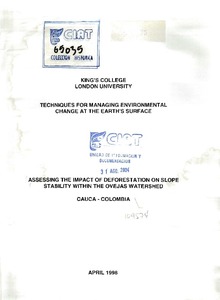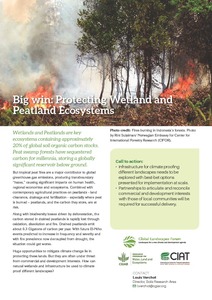Agricultural technologies and tropical deforestation
Do improvements in agricultural technology protect or endanger tropical forests? This book examines this controversial issue. It includes both theoretical frameworks for analysing the issue as well as case studies covering a wide range of geographical regions, technologies, market conditions and types of agricultural procedures. The authors identify technologies, contexts and policies that are likely to be beneficial to both farmers and forests.
Agricultural technology and forests: a recapitulation
This chapter summarises the key insights from the case studies included in the book. First, it discusses the technology-deforestation link in six different types of cases: developed countries, commodity booms, shifting cultivation, permanent upland (rainfed) agriculture, irrigated (lowland) agriculture, and cattle production. Next, it returns to the hypotheses presented in the book, and discusses the key conditioning factors in the technology-deforestation link. A number of factors determine the outcome.
Agroforestry in REDD+: Opportunities and Challenges. ASB Policy Brief 26
Agroforestry and other tree-based systems (wood lots, afforestation) can contribute to Reducing Emissions from Deforestation and Forest Degradation (REDD+) in two ways: 1) as part of REDD+ under certain forest definitions; and / or 2) as part of a strategy for achieving REDD+ in landscapes. In the context of REDD+, agroforestry has the potential for reducing degradation by supplying timber and fuelwood that would otherwise be sourced from adjacent or distant forests.
Amazonia security agenda: summary of findings and initial recommendations
Amazonia’s abundant natural resources underpin water, energy, food and health security for the people and economies of the region and far beyond. At the heart of this nexus of securities is water. So abundant in the region, but now under increasing threat as industrial and agricultural pollution increases, and extreme droughts reveal a once unthinkable water vulnerability.
Anicut systems in Sri Lanka: the case of the upper Walawe River Basin [Sri Lanka].
This exploratory study was designed to capture the main features of agrarian change in the upper part of the basin that depends mostly on anicuts. These anicuts amount to 59 percent of the total basin anicuts in terms of numbers, but to only 43 percent in terms of irrigated area. They are generally very old (the history of some of them goes back to 2000 years; see below) and obviously, many changes have occurred during this time.
Ante un futuro incierto: Cómo se pueden adaptar los bosques y las comunidades al cambio climático
Las respuestas más importantes al cambio climático se enfocan en la mitigación (reducción de la acumulación de gases causantes del efecto invernadero) en vez de centrarse en la adaptación (reducción de la vulnerabilidad de la sociedad y los ecosistemas). No obstante, puesto que actualmente se reconoce que cierto grado de cambio climático es inevitable, la adaptación está adquiriendo importancia en el ámbito de políticas.
Apakah yang dimaksud dengan proyek percontohan REDD+?: Klasifikasi awal berdasarkan beberapa kegiatan awal di Indonesia
Infobrief ini memberikan gambaran awal tentang 17 proyek percontohan REDD+ yang dikembangkan di Indonesia pada pertengahan tahun 2009. Terdapat variasi yang tinggi dalam pelaksanaan dan uji coba proyek percontohan REDD+ yang dilakukan oleh para pemrakarsa. Tiga dimensi utama yang bermanfaat untuk mengelompokkan proyek-proyek percontohan tersebut adalah: 1) tingkat perencanaan tata ruang dan heterogenitas dari klasifikasi hutan, 2) strategi untuk menyelesaikan klaim jangka panjang terhadap karbon, dan 3) faktor pendorong dan penyebab utama deforestasi dan degradasi.
Arresting resource degradation in the forest margins of Amazonia: economic and policy analysis of agricultural land use
Assessing the impact of deforestation on slope stability withint the Ovejas watershed, Cauca, Colombia
Big win: Protecting Wetland and Peatland Ecosystems
Wetlands and peatlands are key
ecosystems containing approximately
20% of global soil organic carbon stocks.
Peat swamp forests have sequestered
carbon for millennia, storing a globally
significant reservoir below ground.




